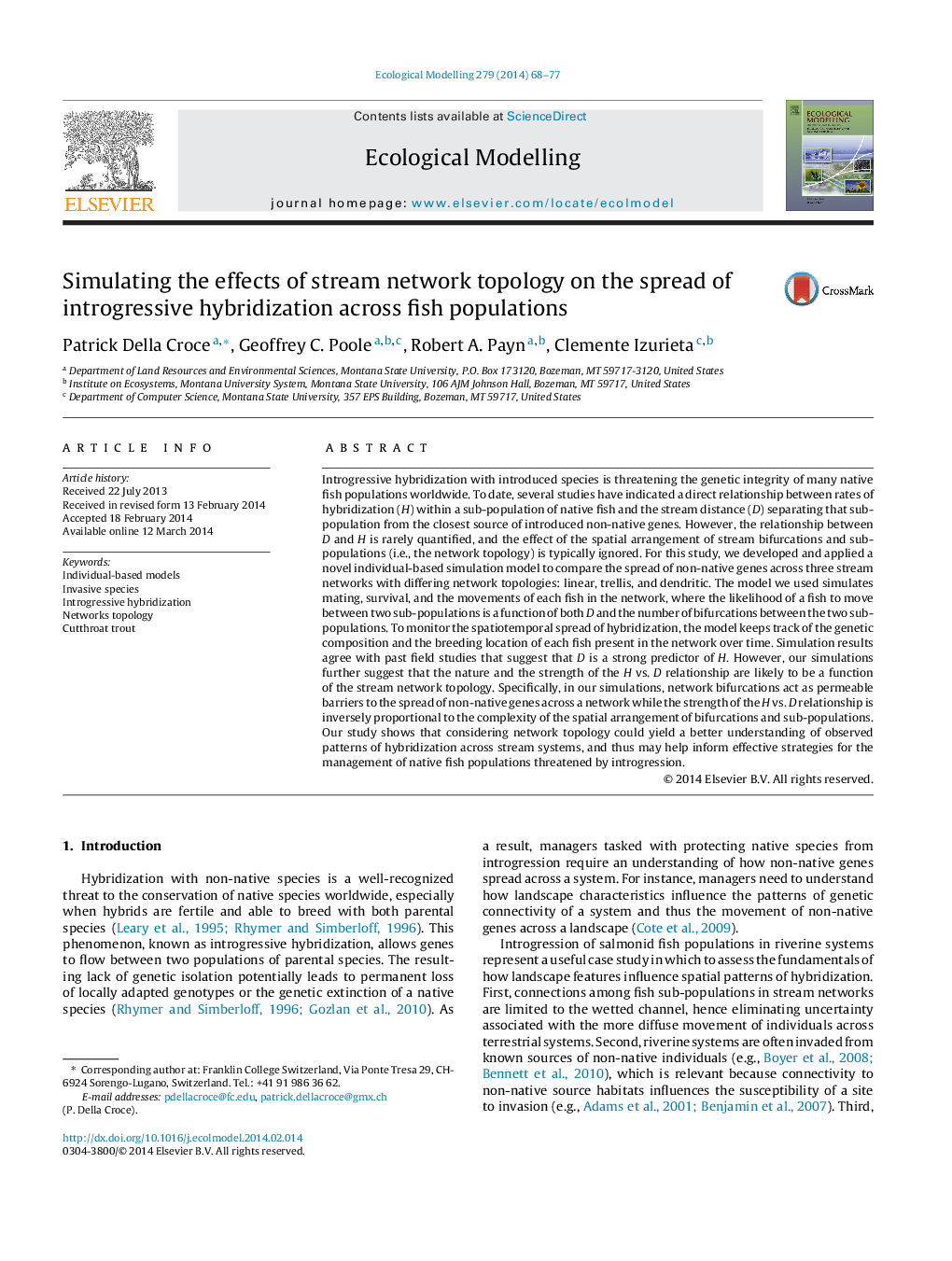| Article ID | Journal | Published Year | Pages | File Type |
|---|---|---|---|---|
| 4375975 | Ecological Modelling | 2014 | 10 Pages |
•We modeled hybridization between salmonids across three different river networks.•We examined the effects of network bifurcations on the spread of non-native genes.•Bifurcation decreased the rate of the spread of hybridization across a network.•Complex arrangement of bifurcation yielded less predictable spread of hybridization.•Spatial arrangement of bifurcations can explain observed patterns of introgression.
Introgressive hybridization with introduced species is threatening the genetic integrity of many native fish populations worldwide. To date, several studies have indicated a direct relationship between rates of hybridization (H) within a sub-population of native fish and the stream distance (D) separating that sub-population from the closest source of introduced non-native genes. However, the relationship between D and H is rarely quantified, and the effect of the spatial arrangement of stream bifurcations and sub-populations (i.e., the network topology) is typically ignored. For this study, we developed and applied a novel individual-based simulation model to compare the spread of non-native genes across three stream networks with differing network topologies: linear, trellis, and dendritic. The model we used simulates mating, survival, and the movements of each fish in the network, where the likelihood of a fish to move between two sub-populations is a function of both D and the number of bifurcations between the two sub-populations. To monitor the spatiotemporal spread of hybridization, the model keeps track of the genetic composition and the breeding location of each fish present in the network over time. Simulation results agree with past field studies that suggest that D is a strong predictor of H. However, our simulations further suggest that the nature and the strength of the H vs. D relationship are likely to be a function of the stream network topology. Specifically, in our simulations, network bifurcations act as permeable barriers to the spread of non-native genes across a network while the strength of the H vs. D relationship is inversely proportional to the complexity of the spatial arrangement of bifurcations and sub-populations. Our study shows that considering network topology could yield a better understanding of observed patterns of hybridization across stream systems, and thus may help inform effective strategies for the management of native fish populations threatened by introgression.
